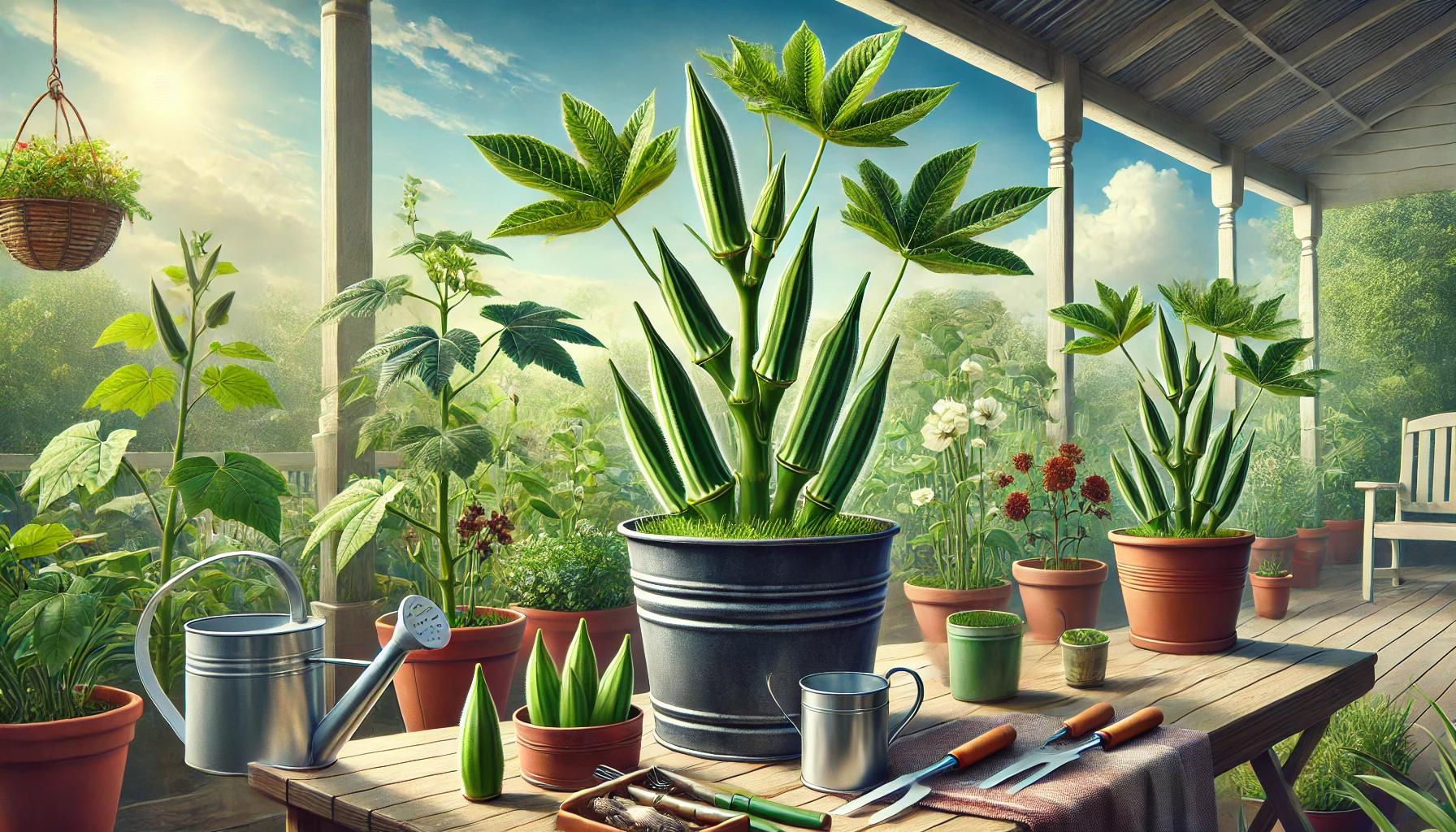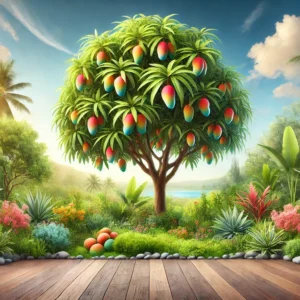Okra, also known as lady’s fingers or gumbo, is a warm-season vegetable prized for its edible green pods. Belonging to the mallow family, this annual plant thrives in hot climates and is widely cultivated for its culinary versatility and nutritional benefits. Its vibrant flowers add ornamental value to gardens, making it a popular choice among urban gardeners. Growing okra in a pot allows enthusiasts with limited space to enjoy its fresh produce while adding a touch of greenery to their surroundings.
Ideal Pot Size:
Selecting the right pot size is crucial for the successful cultivation of okra. A pot with a diameter of at least 12-18 inches and a depth of 12-14 inches provides ample space for the plant’s root system to develop and thrive.
Perfect Weather Conditions for Okra:
| Weather Condition | Temperature (°F) | Sunlight | Humidity |
|---|---|---|---|
| Warm | 70-90°F | Full sun (6-8 hours) | Moderate |
| (30-50% RH) |
Choosing the Right Seeds:
When selecting okra seeds, opt for high-quality seeds from reputable suppliers or choose seeds from mature okra pods collected from your own garden. Ensure the seeds are plump, firm, and free from any signs of damage or decay. Store seeds in a cool, dry place in an airtight container to maintain their viability.
Growing Seedlings from Seeds:
- Seed Selection: Choose well-draining seedling trays or pots and fill them with a pre-moistened seed-starting mix.
- Planting: Sow okra seeds 1 inch deep and 2-3 inches apart in the soil. Cover the seeds lightly with soil and gently press down.
- Watering: Keep the soil consistently moist but not waterlogged. Water the seeds gently to avoid displacing them.
- Germination: Place the tray in a warm, sunny location, maintaining temperatures around 70-90°F. Germination usually occurs within 7-14 days.
- Transplanting: Once the seedlings have developed two sets of true leaves, they are ready for transplanting into individual pots.
Nutrition Requirements for Okra:
| Nutrient | Function | Required Amount | Importance |
|---|---|---|---|
| Nitrogen (N) | Leaf and stem growth | High | Promotes lush foliage and vigorous growth |
| Phosphorus (P) | Root development and flowering | Medium | Essential for strong root systems and prolific flowering |
| Potassium (K) | Fruit development and overall plant health | High | Enhances fruit quality, aids in disease resistance, and regulates water uptake |
| Calcium (Ca) | Cell wall structure and nutrient transport | Medium | Prevents disorders like blossom end rot and supports overall plant health |
| Magnesium (Mg) | Chlorophyll formation and enzyme activation | Medium | Vital for photosynthesis and metabolic processes, ensuring healthy growth and development |
Ideal Soil Mix for Okra:
Create a well-draining soil mix by combining:
- 60% loamy garden soil
- 20% compost or well-rotted manure
- 20% perlite or coarse sand
Pot Drainage System:
Ensure proper drainage by drilling holes in the bottom of the pot to prevent waterlogging. Place a layer of gravel or broken pottery shards at the bottom before adding the soil mix to improve drainage further.
Seedling Transfer Process:
- Gently loosen the soil around the base of the seedling tray to avoid damaging the roots.
- Hold the seedling by its leaves to prevent injuring the delicate stem.
- Dig a hole in the center of the pot slightly larger than the root ball.
- Place the seedling in the hole and fill it with soil, gently firming it around the base of the plant.
- Water the newly transplanted seedling thoroughly to help settle the soil.
Stages of Growth:
- Seedling Stage (Weeks 1-2):
- Water seedlings regularly, keeping the soil consistently moist but not waterlogged.
- Provide indirect sunlight initially to prevent stress on the delicate plants.
- Once established, gradually expose seedlings to full sunlight.
2.Vegetative Stage (Weeks 3-6):
- Water deeply once a week, allowing the soil to dry slightly between waterings.
- Apply a balanced fertilizer every 2-3 weeks to support vigorous growth.
- Monitor for pests and diseases, addressing any issues promptly.
3. Flowering Stage (Weeks 7-10):
- Continue regular watering, ensuring the soil remains evenly moist.
- Side dress with a high-potassium fertilizer to promote flowering and fruit development.
- Mulch around the base of the plant to conserve moisture and suppress weeds.
4. Fruiting Stage (Weeks 11-14):
- Increase watering frequency as the plants require more moisture during fruit development.
- Provide support for tall varieties by staking or trellising to prevent lodging.
- Harvest okra pods when they are 2-3 inches long for optimal tenderness.
Special Instructions for Pot Gardening:
- Rotate pots regularly to ensure even sunlight exposure and balanced growth.
- Prune overcrowded or damaged branches to improve air circulation and minimize disease risk.
- Monitor soil moisture levels closely, adjusting watering frequency based on environmental conditions.
Harvesting and Preserving the Crop:
- Harvest okra pods when they are young and tender, using sharp scissors or pruning shears to avoid damaging the plant.
- Harvest pods every 2-3 days to encourage continuous production.
- Store harvested okra in the refrigerator in a perforated plastic bag for up to one week, or blanch and freeze for longer-term preservation.
By following these guidelines, even novice gardeners can enjoy a bountiful harvest of fresh okra from the convenience of their own pot garden. With proper care and attention to detail, growing okra in a pot can be a rewarding and fulfilling experience for gardeners of all skill levels.



